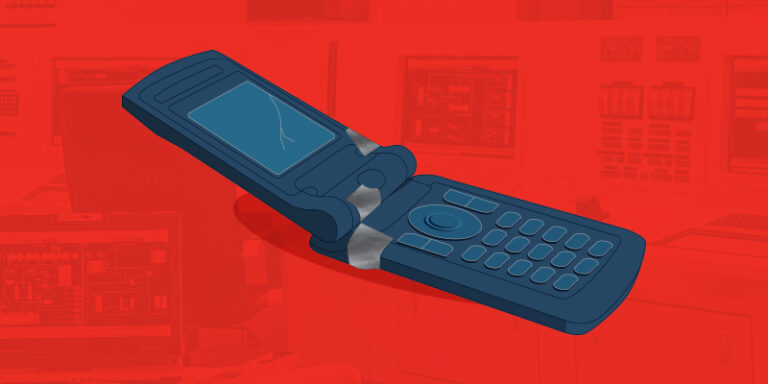For many manufacturers, the struggle is real when it comes to maintaining aging automation platforms. In fact, according to ARC Advisory Group, there are $65B worth of installed distributed control systems (DCSs) nearing end of life with many of those systems more than 25 years old. Unfortunately, manufacturers experience a much greater rate of failure as the DCS components get up in age along with a plethora of other associated risks. Overcoming these obstacles and finding the best path forward toward a new, more effective automation solution is key to future success.
No Spare Parts
Sourcing spare parts becomes difficult as the control system suppliers no longer offer replacement parts when they choose not to redesign the old circuit boards with new components. This forces users to rely on the aftermarket for used parts or remanufactured components, which don’t have near the reliability of new parts. Failures in systems without redundancy often cause immediate production downtime. Even systems with redundancy eventually experience failure rates high enough to impact production because of multiple failures occurring before parts can be replaced.
Tribal Knowledge
Not only do parts become difficult to find, having personnel knowledgeable with the legacy platform is also a challenge. Again, according to ARC, over 20% of personnel familiar with legacy DCS platforms have retired. This leaves many facilities without people able to modify or even maintain the control system. The options for replacing this tribal knowledge are limited because the DCS suppliers often no longer provide training on older platforms. And even if training is offered, millennials are none too excited about learning an obsolete technology, which will not give them skills to enhance their career or find a job in the future.
What’s the Risk?
The risks for keeping a legacy automation system are numerous. As the failure rate of components increases, so does the impact to production. Facility outages lasting several weeks in duration can occur due to a significant control system failure. The risk escalates when you combine failures with a lack of local resources able to troubleshoot and make repairs. The cost of this lost production quickly exceeds the cost to upgrade the control system to a modern platform. And nearly every production upset comes with associated safety and environmental risks.
Hidden Costs
Even if the legacy system is still working, there are many hidden costs to keeping it around. OEM parts and support costs are much higher for older platforms. There is often a significant lack of functionality when compared to a modern DCS. Limitations in the older technology prevent open communication to smart field devices, subsystems and higher-level enterprise resource planning (ERP) systems. Operators are less effective using the outdated human-machine interfaces (HMIs) in legacy DCS platforms, and their response to abnormal situations is inhibited by poorly functioning legacy alarm systems. In addition, the older platforms utilize unsupported operating systems and technologies that are vulnerable to cyber-attacks with no way to adequately secure them.
Modernization Is Key
What can be done to mitigate all these risks and find the best path forward? Some users utilize a short-sighted strategy of accumulating a quantity of spare parts hoping to extend the life of their system (otherwise known as eBay and pray). Unfortunately, this approach still leaves them vulnerable to all the risks previously mentioned.
The only viable option for long-term operational excellence is to modernize the automation system. The automation system is the “brain” of a facility. Just as the human body cannot work well without a properly functioning brain, your facility simply cannot have good operation without a well-performing automation system.
Modernization is the key and is best done in a planned, disciplined fashion. As with any project, you will want to utilize proven best practices and implementation resources that will deliver value throughout the new system’s entire lifecycle. Of utmost importance is to begin with a front-end loading (FEL) engineering effort for successful planning and budgeting. This will allow you to:
- define a scope aligned with business needs and facility requirements
- evaluate and select the best platform and project options
- develop an execution plan and schedule
- develop an accurate cost estimate and associated justification
Engaging automation experts up front and utilizing them throughout the project will greatly increase your success. A trusted partner can help with the process, answer questions and remove any uncertainties. Having a qualified team who has unbiased practical experience working with a range of manufacturing processes and automation technologies will lead to successful project execution and implementation.
Other keys to success include establishing standards to ensure the new automation system is designed and configured in a way that meets your facility’s requirements and is maintainable going forward. The project needs to be executed following good project management discipline and automation engineering best practices that have been refined over the course of numerous modernization projects.
Because a modernization is the perfect time to improve control system performance, do not simply duplicate the functionality of the legacy system. Now is the time to innovate! What if you don’t have this kind of expertise within your company? Again, an expert automation team can assist with planning and implementing an efficient, cost-effective and safe DCS upgrade or migration.
Don’t let your legacy systems continue to limit your facility’s operations. For improved production and a competitive advantage, take the migration path to lead your facility out of the legacy system dilemma into the modern world.

